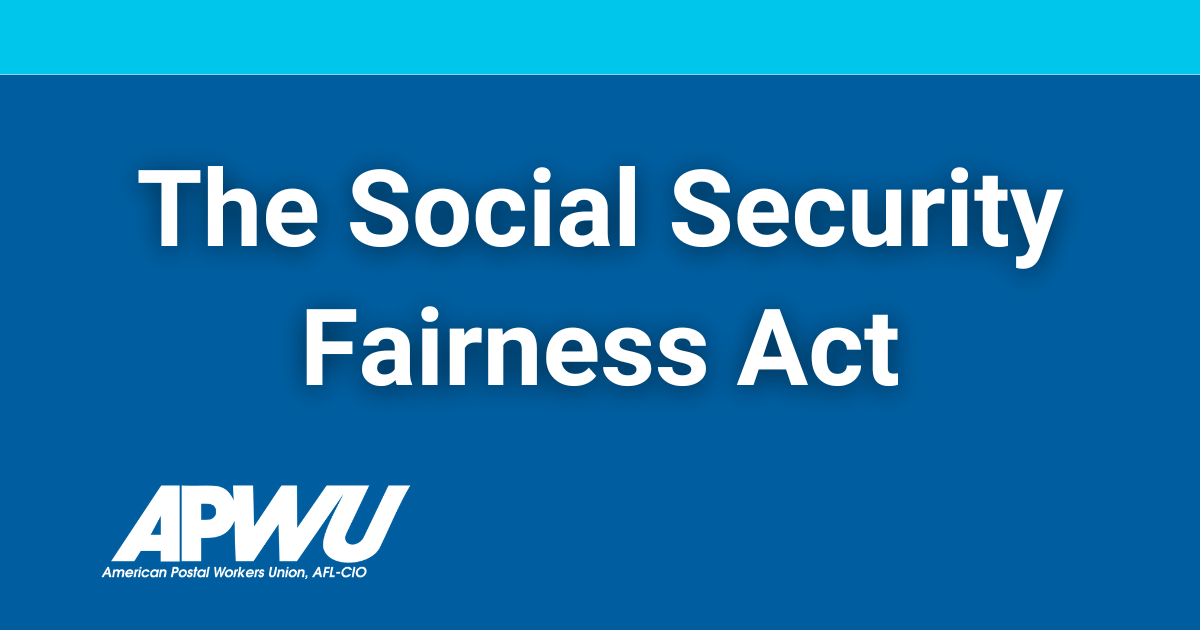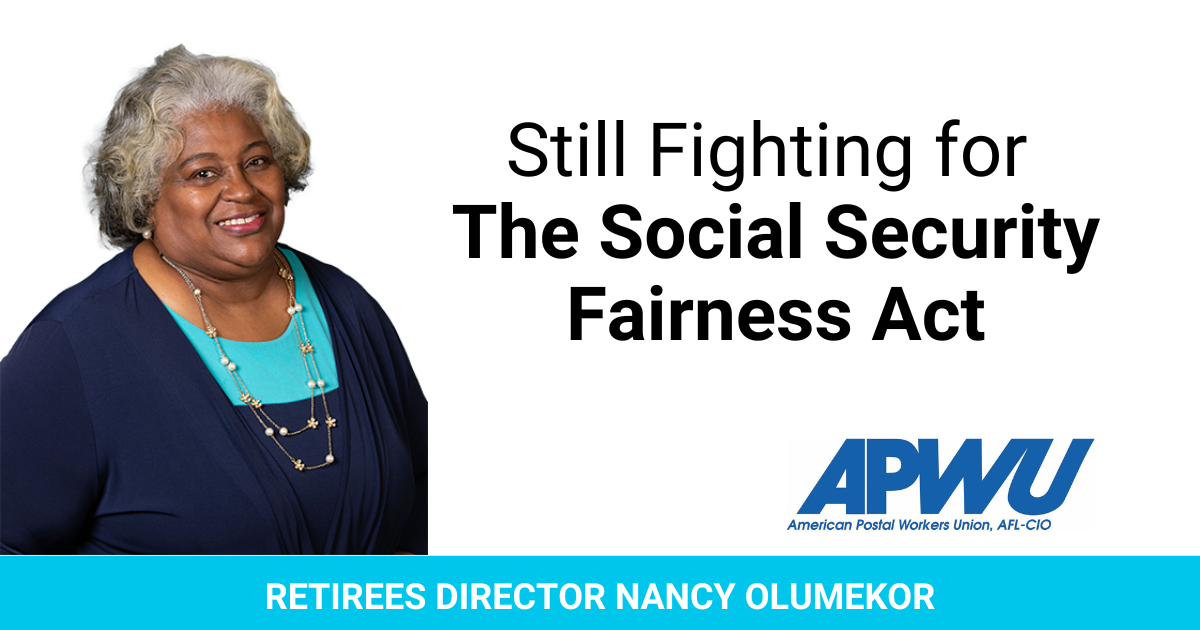CWA Statement Regarding Passage of the Social Security Fairness Act: This statement analyzes the Communication Workers of America’s (CWA) official position on the recently passed Social Security Fairness Act. We will explore the CWA’s arguments, their advocacy efforts, and the potential impact on their members’ retirement security. The analysis will also consider the broader political and social context surrounding the Act’s passage and its long-term implications for Social Security and related federal programs.
The CWA’s involvement spanned several months, encompassing lobbying efforts, public statements, and collaborations with other organizations. This detailed examination will reveal the CWA’s strategic approach and compare it to their past advocacy work on similar issues. We will also analyze the potential financial ramifications for CWA members, highlighting any disproportionate impacts on specific subgroups within the union.
CWA’s Response to the Social Security Fairness Act

The passage of the Social Security Fairness Act represents a significant development for millions of Americans, and the Communications Workers of America (CWA) has taken a definitive stance on its implications. This article details the CWA’s official position, analyzes its potential impact on CWA members, examines the union’s advocacy efforts, and explores the broader context and future strategies surrounding this legislation.
CWA’s Official Stance on the Social Security Fairness Act
The CWA officially supported the Social Security Fairness Act, viewing it as a crucial step towards rectifying perceived inequities within the Social Security system. The union’s key arguments centered on the unfairness of current provisions that penalize workers who had periods of unemployment or low earnings early in their careers, disproportionately affecting women and minorities. They argued that these provisions created significant disparities in retirement benefits, undermining the system’s intended goal of providing a secure retirement for all contributors.
The CWA’s involvement began long before the Act’s passage. They actively participated in lobbying efforts, engaging in direct communication with legislators, organizing grassroots campaigns among their members, and collaborating with other labor unions and advocacy groups. This culminated in their strong endorsement of the Act and their active participation in the campaign leading up to its passage.
| Stakeholder | Position | Key Arguments | Expected Impact |
|---|---|---|---|
| CWA | Strong Support | Addresses inequities, improves retirement security for workers | Positive impact on member retirement benefits |
| AARP | Support | Improves fairness and equity in the Social Security system | Increased benefits for many retirees |
| National Association of Manufacturers (NAM) | Neutral/Undecided | Concerns about potential increased costs | Uncertain, potentially increased cost burden for businesses |
| The Heritage Foundation | Opposition | Concerns about the long-term solvency of Social Security | Negative impact on Social Security’s long-term financial health |
Impact on CWA Members’ Retirement Benefits, CWA Statement Regarding Passage of the Social Security Fairness
The Social Security Fairness Act is projected to positively affect CWA members’ retirement benefits, particularly those who experienced periods of unemployment or low-income employment earlier in their careers. By recalculating benefits to exclude these periods of lower earnings, the Act aims to provide a more equitable retirement income for these individuals. This will contribute to improved financial security in retirement for many CWA members.
Women and minority members within the CWA, who are statistically more likely to experience career interruptions, may see a disproportionately positive impact from this legislation. For example, a female CWA member who took time off to raise children might experience a significant increase in her monthly benefit due to the exclusion of those low-earning years.
Hypothetical Scenario: Consider a CWA member, Sarah, who worked for 30 years but had a 5-year gap due to childcare. Under the old system, these low- or no-income years significantly reduced her benefit calculation. The Social Security Fairness Act would recalculate her benefit, excluding those years, resulting in a potentially substantial increase in her monthly retirement income.
CWA’s Advocacy Efforts for the Social Security Fairness Act
The CWA employed a multi-pronged approach to advocate for the Social Security Fairness Act. This included direct lobbying of Congressional representatives, mobilizing members to contact their elected officials, and launching targeted public awareness campaigns. The union also collaborated with other labor unions and advocacy groups to amplify their message and exert greater influence on policymakers.
- Direct lobbying of Congress members and staff.
- Grassroots mobilization of CWA members to contact their representatives.
- Public relations campaigns highlighting the Act’s benefits.
- Collaboration with allied organizations such as AFL-CIO.
This approach mirrors, yet expands upon, the CWA’s past advocacy efforts on Social Security, demonstrating a commitment to ensuring a strong and equitable retirement system for their members. Key individuals within the CWA’s political action committee played crucial roles, coordinating these activities.
The CWA’s statement on the Social Security Fairness Act passage highlights a significant victory for workers. This positive development contrasts sharply with the brutal efficiency seen in the boxing world; for instance, Moses Itauma demolishes Demsey McKean with another first-round , showcasing a different kind of decisive victory. Ultimately, both events underscore the power of decisive action, whether in legislative reform or the boxing ring, achieving swift and impactful results.
Broader Context and Implications of the Social Security Fairness Act

The passage of the Social Security Fairness Act occurred within a broader political and social context characterized by increasing concerns about income inequality and retirement security. The Act’s long-term implications for Social Security remain to be seen, but it’s anticipated to increase the overall financial burden on the system. This could lead to future debates about adjusting contribution rates or benefit levels to maintain the system’s solvency.
The Act’s impact on other federal retirement programs is less direct but could indirectly influence policy discussions surrounding similar programs. The success or failure of the Act in achieving its goals could serve as a case study for future legislative efforts in this area.
The CWA’s statement celebrating the Social Security Fairness Act’s passage highlights a significant victory for retirees. This positive development contrasts sharply with the recent political maneuvering in Washington, as evidenced by the Senate’s last-minute approval of a government funding extension after failing to reach a broader agreement, as reported here: US Senate approves government funding extension after failing to.
The contrast underscores the need for consistent, bipartisan action on crucial social issues, similar to the progress made with Social Security reform.
Illustrative Representation: A bar graph could visually represent the Act’s potential impact across different demographic groups. The x-axis would list demographic groups (e.g., women, men, minorities), while the y-axis would represent the percentage increase in average retirement benefits. This would clearly show how the Act disproportionately benefits specific groups, highlighting its impact on equity within the Social Security system.
CWA’s Future Actions and Strategies Regarding Social Security

Following the Act’s passage, the CWA plans to monitor its implementation closely, ensuring that its benefits are realized by members. The union will continue to advocate for further improvements to Social Security, focusing on long-term solvency and addressing any unforeseen challenges that arise. This might involve collaborations with other unions, advocacy groups, and policymakers to develop comprehensive strategies for strengthening Social Security’s financial stability and equity.
The CWA will adapt its strategies based on the Act’s actual impact. If the Act proves insufficient in addressing certain inequities, the union will likely push for additional reforms. Potential collaborations include partnerships with organizations focused on retirement security, economic justice, and social welfare.
The passage of the Social Security Fairness Act represents a significant development with far-reaching consequences. The CWA’s response, detailed in this statement, provides valuable insight into the complexities of this legislation and its potential impact on workers’ retirement security. The union’s proactive engagement in the legislative process and their commitment to advocating for their members underscore the importance of organized labor in shaping social security policy.
Further analysis and ongoing monitoring of the Act’s implementation will be crucial in assessing its long-term effects and informing future advocacy efforts.
Question Bank: CWA Statement Regarding Passage Of The Social Security Fairness
What specific benefits does the Social Security Fairness Act change?
The act addresses specific issues impacting benefit calculations, such as those related to the Windfall Elimination Provision (WEP) and the Government Pension Offset (GPO). The precise changes will need to be examined within the Act’s detailed text.
How does the CWA plan to monitor the Act’s implementation?
The CWA’s future actions will likely involve close monitoring of the Act’s implementation, continued communication with members, and ongoing advocacy to address any unforeseen negative consequences.
What are the potential legal challenges to the Social Security Fairness Act?
While not explicitly addressed in the Artikel, potential legal challenges could arise from various groups or individuals who believe the Act is unconstitutional or unfairly impacts specific populations. Further research is needed to explore these possibilities.
